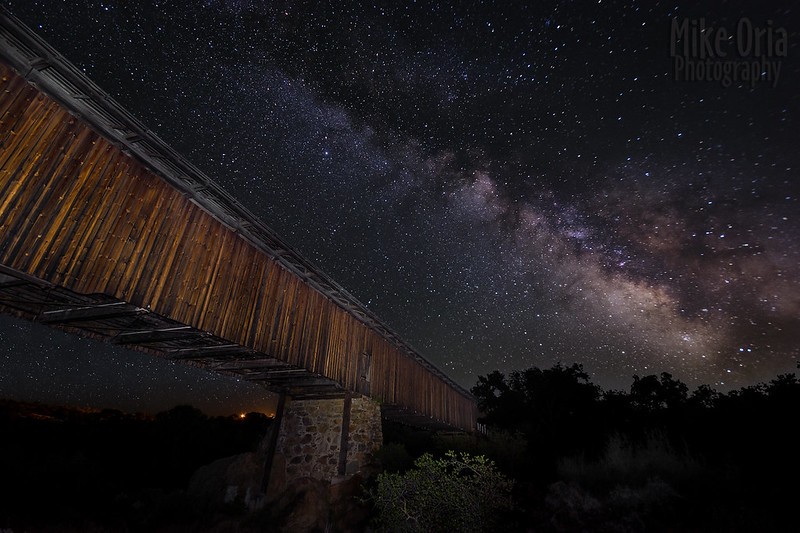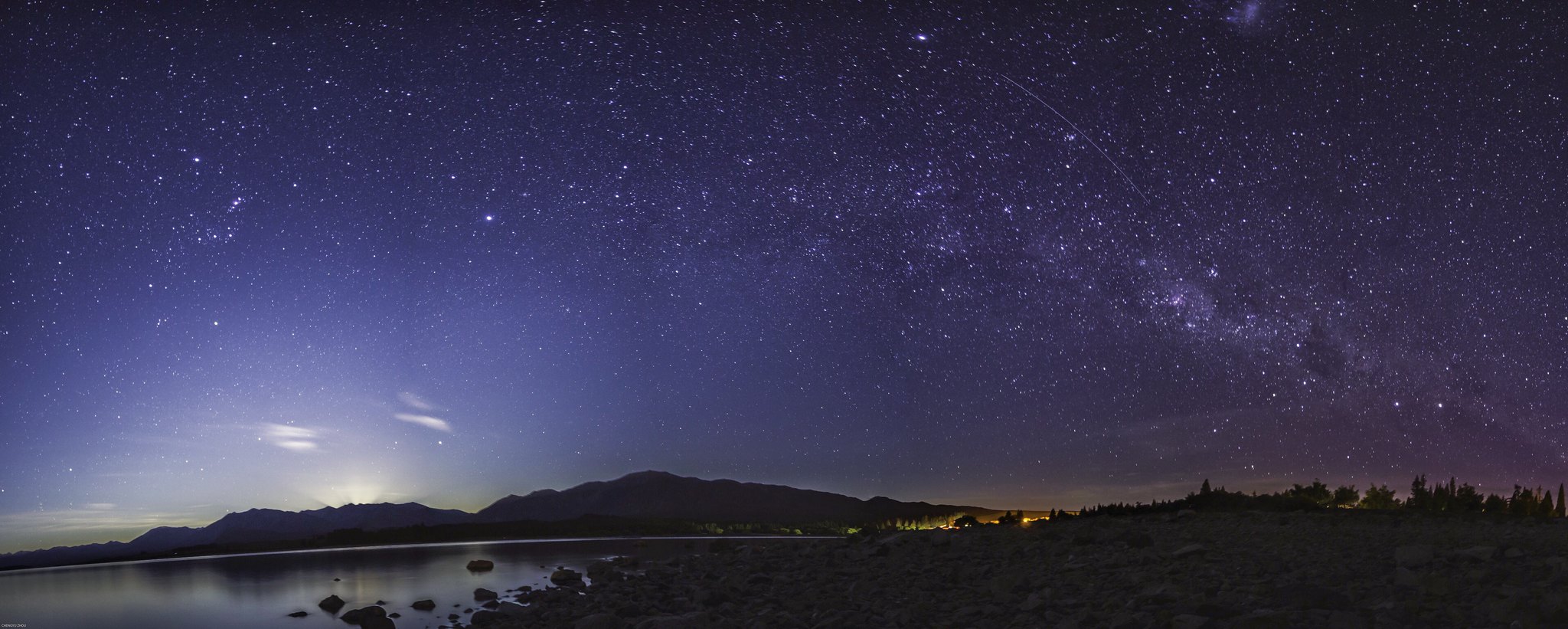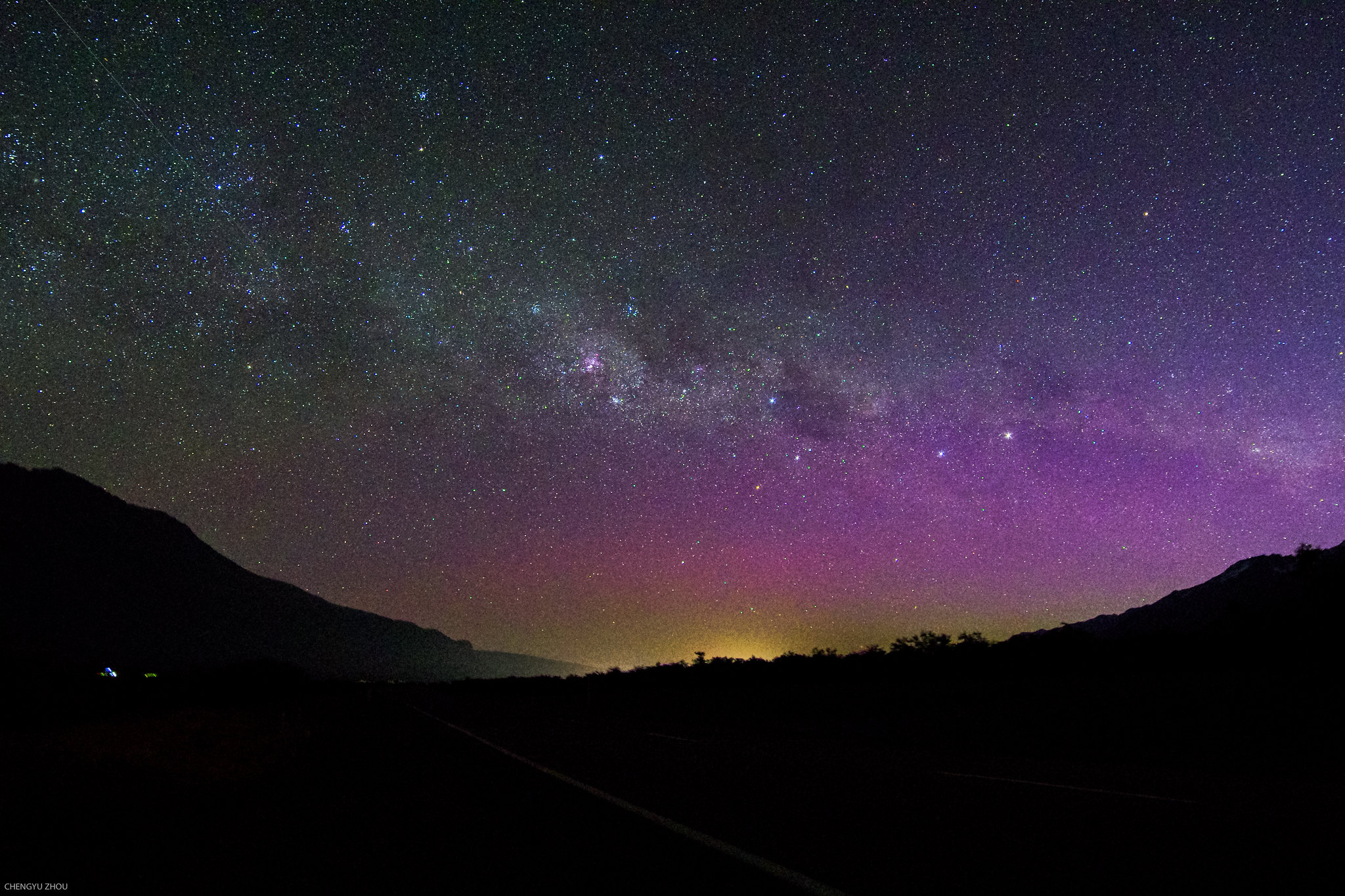 Originally posted by Pete_XL
Originally posted by Pete_XL 
Very nice result though!
Compared to the last photo of mikeSF there is some trailing in the edges. I also have problems with this using wide lens and think it occurs because the sensor shift is off-axis in respect to the earth axis.
Why does the picture of mikeSF not show trails instead?

I am certainly not mikeSF - not nearly as talented, but in the two years (well two Milky Way seasons - Feb to Oct) I have been using the GPS unit, I have found (through trial and error - a lot of error), that time (shutter) is a critical parameter in all of this. Initially, I thought that 5 minutes (300 seconds) - go for the max, was the way to go. Optimize / maximize you exposure time to light (collect as much as possible). Then I started to see the stars trailing around the edges of the frame. Initially, I thought that it was coma, but the lens I was using - the FA 31Ltd and Sigma 18-35 are noted for their lack of coma. At the same time, I was also experimenting with ISO - and have settled on no higher than 1600. [note - changing two items, shutter time and ISO, just prolonged the agony of discovery.]
Anyway, back to time. I also considered just abandoning the GPS unit and just going for a single image containing both the landscape element and the sky (MW). The 500 rule (500/focal length) was being pushed a lot on the web. Another poster over on Reddit (RClark - who does some really magnificent MW shots and processing) made an off hand remark (working through the math on the pixel level) that to eliminate trailing a good approximation is the 200 rule (200/focal length). This got me thinking earlier this year, and I backed off of 5 minutes to 4 minutes and was able to capture a really nice shot, but I still was capturing some trailing - essentially "sensor shift is off-axis in respect to the earth axis", as you described it.
So, now my rule of thumb is no more than 2 minutes (120 seconds) with the GPS unit, and when not using GPS tracking 10 seconds (the 200 rule with an 18mm lens). Unfortunately, earlier this year, I kept missing opportunities - with business travel back east, and then later in the year, the MW rotated a bit too high over the landscape elements. So, I missed it - there is always next year!
In terms of stitching, one evening after being kicked out of the state park (upon closing) - I went up to a slightly different area with a poorer view of the landscape and did some stitching - with just the body and lens - no GPS. Even using 20 seconds and doing about
50% overlap, I did not get any real trailing (center of the lens and center of the sensor). This was essentially a throwaway shot at the last minute, before heading home.
So, this year has been filled with the frustration of discovery (the hard way), missed opportunities, and just plain making stupid mistakes. But I have learned quite a bit overall. Then, there is this unity discussion over on the Astrophotography group here on PF - that a number of you are also on....
The main thrust is that there is an ISO level that is optimum in terms of capturing light photons - and anything over this ISO is just adding noise. So, for my K5IIs it appears to be either 800 or 1600. Reading the posts after recovering from surgery has not done a lot for my full understanding - I need to go back and re-read them. My question is now 800 or 1600?
So, my take away is that ...
- in terms of both shutter speed and ISO - less is more. Somewhat counter intuitive.
- in terms of stitching, you can get away with more with a lot of overlapping - which essentially forces the use of both the center of the lens (and sensor). This I really did not expect until I really looked at that stitched image I was going to toss.



 Similar Threads
Similar Threads 


















 Post #1083 by Eric Seavey
Post #1083 by Eric Seavey








